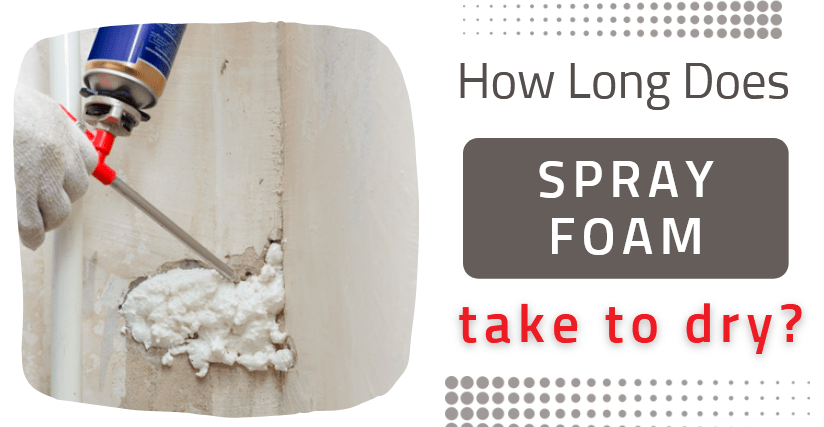Spray foam insulation, a popular and effective method, is applied as a liquid and expands into a solid foam. Its ease of application makes it a preferred choice, especially for single-pass installations where each inch of thickness is crucial for effective insulation.
The adaptability of spray foam to various weather conditions also adds to its popularity. However, how long does it take to dry?
To ensure that spray foam insulation dries appropriately and performs as expected, it is also crucial for you to know how to make it dry faster. In this article, we will explore how long it takes for the spray foam to dry and fast-drying spray foam tips you can try.
How Long Does Spray Foam Take to Dry?
The drying time of spray foam insulation varies depending on several factors, including the type of foam used, the thickness of the foam application, and the ambient temperature and humidity levels.
Weather conditions play a significant role in the drying process, with varying temperatures and humidity levels impacting the time it takes for the foam to dry.

Spray foam generally takes about 5 minutes to an hour to become tack-free, meaning the foam will no longer stick to your finger when touched.
The time it takes to reach this stage can be influenced by the specific conditions of the application, such as the inch of thickness applied and the efficiency of the single-pass installation process. Then, on average, it takes about 8 to 24 hours to dry and cure thoroughly.
However, the drying time can also vary depending on the foam type and the specific application conditions, such as the weather conditions during installation. Here are the details for different types of spray foam insulation:
● Open-cell Spray Foam
This type is less dense and typically dries faster, about 8 to 24 hours
● Closed-cell Spray Foam
This type is denser, so it takes more time for the foam to expand and harden fully, about 20 to 24 hours.
What Is the Best Spray Foam Cure Temperature
Like the drying time, the best temperature to cure spray foam insulation also depends on the spray foam used. But in general, most manufacturers recommend between 60°F and 90°F (16°C and 32°C) for optimal performance.
It is also important to note that the temperature of the spray foam components and substrate affects the curing process. Spray foam components need a minimum temperature of 70-80°F (21-27°C) for application to ensure that the components mix properly and the chemical reaction occurs correctly.
Meanwhile, the substrate should be at a minimum temperature of 60-80°F (16-27°C) before spraying. Control the temperature to avoid condensation that can harm the spray foam’s adhesion.
How to Make Spray Foam Dry Faster?
To make spray foam dry faster, you can use fast-drying spray foam designed to dry and cure more quickly. You can also consider some steps to help the foam dry faster. Here are a few tips:
● Controlling the Temperature
The curing process of spray foam is temperature-sensitive. Increasing the ambient temperature can speed up the curing process. However, avoid exceeding the recommended temperature for the spray foam to prevent overheating and fire risk.
● Increase Ventilation
Foam needs moisture to cure completely. Increasing air circulation can speed up spray foam drying. Increase airflow by opening windows, using fans, or running air circulation systems.
Usually, spray foam smells strong during the application and curing, particularly in high temperatures. It occurs because spray foam evaporates due to its chemicals. So, proper air circulation can reduce odor and speed up foam drying.
● Moisten the Application Area
Adding water or mist to the surrounding area can increase humidity and speed up spray foam curing. But avoid over-dampening the area to prevent excessive foam expansion and impact on insulation quality.
Misting the foam with water between layers can also be helpful when applying multiple layers of spray foam. This aids foam adhesion and creates a stronger bond between the layers.
● Avoid Applying Too Much Foam
Lastly, avoid over-applying the foam. It can slow down the curing process because it generates more heat during the reaction. Just make sure to follow the manufacturer’s instructions when applying the foam.
So, how long does spray foam take to dry? It depends on your spray foam, but applying these tips can help speed up drying. However, allowing the foam to cure fully before use is still crucial. Rushing the curing process may affect the spray foam’s performance and durability.


